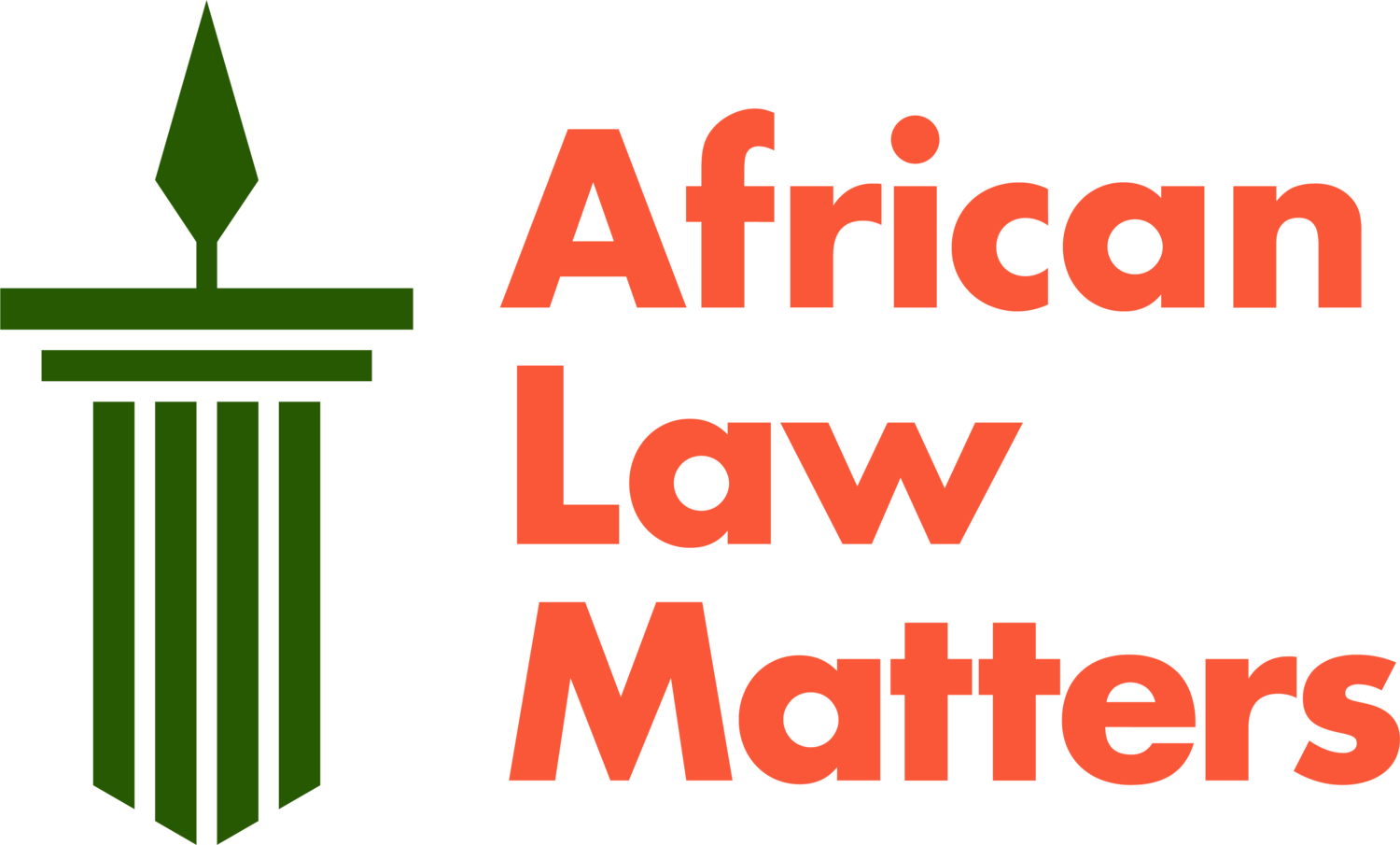The BBI Judgment: Of Basic Structure Doctrines and Participatory Constitution-making
"A copy of the constitution and other legal texts sit on a table at the High Court in Nairobi, Kenya on February 22, 2018” by AP Photo/Ben Curtis was sourced from the Africa Report.
Editors’ Note: This post constitutes part of a blog series on the Building Bridges Initiative (BBI) in Kenya, through which President Uhuru Kenyatta attempted to introduce the Constitution of Kenya (Amendment) Bill, 2020. Among the various reforms proposed therein, the bill introduced a new post of Prime Minister which, it has been speculated, is a role that President Kenyatta could seek should he lose the presidency. The bill was opposed on the basis of its constitutional validity and traversed the Kenyan courts, finally reaching the Supreme Court. A split bench of the Supreme Court held that the bill was irregular and unlawful because the constitutional requirement of public participation was not satisfied through the process of the bill’s introduction. This series seeks to provide a global perspective on the significance of the Kenyan Supreme Court’s judgment, and features contributions from legal experts and practitioners reflecting on the judgment and its implications for Kenya’s legal landscape. The series is being sponsored and organised jointly with the ICONnect blog, and all posts will appear on both blogs.
The BBI saga raises important questions about the interplay between unamendability and participatory constitution-making. What is the relevance of the participatory nature of the adoption of Kenya’s 2010 Constitution vis-à-vis the acceptance or rejection of unamendability in the BBI case?
As I argued in Eternity Clauses in Democratic Constitutionalism, the relationship between the two is not at all straightforward. Comparative practice indicates we should not expect a participatory constitution-making process to result in a constitutional text that by necessity either retains that participatory spirit or rejects eternity clauses. The openness of the constitutional founding need not be reflected in similar openness in the design of the amendment process. In fact, one could argue that an eternity clause adopted in such a participatory fashion would have the highest claim to democratic legitimacy.
As the Kenyan Constitution does not contain an eternity clause, it was left to the courts to determine whether a holistic interpretation nevertheless indicated framer intent supporting a basic structure doctrine. The parties in the case, the amici curiae, and the justices disagreed on this point. They differed on whether the participatory nature of the constitution-making process was carried over exhaustively in the constitutional text via its Chapter Sixteen and on whether there was scope for the judicial protection of the primary constituent power of the people from political usurpation.
Views thus diverged on how to interpret Article 257 (the popular initiative mechanism) and whether it, together with Article 256 (the legislative route to amendment) and Article 255 (listing the substantive areas where constitutional change will require a referendum), had any bearing on the appropriateness of adopting a basic structure doctrine in Kenya.
To these three methods of amendment, a fourth had been added by the High Court, consisting of civic education, public participation and collection of views, constituent assembly debates, and a referendum. This was said to be the only route through which the primary constituent power could express itself in order to alter the Constitution’s basic structure. The basis for this fourth pathway was said to lie in the participatory nature of the constitution-making process itself: “Kenyans intended to protect the Basic Structure of the Constitution they bequeathed to themselves in 2010 from destruction through gradual amendments.” (High Court judgment, para 469)
“[U]namendability has an often forgotten dark side: while we may wish it to be deployed as a means of last resort in the face of anti-democratic constitutional subterfuge, in reality it frequently ends up a tool to entrench exclusionary values and elite hold on power.”
The Supreme Court ultimately rejected the adoption of the basic structure doctrine. It read the silence on unamendability, together with the tiered amendment design in Chapter Sixteen, as evidence that the Kenyan people purposefully chose to balance rigidity and flexibility short of unamendability (para 191). If nothing else, the Court’s reversal of the fate of the basic structure doctrine in Kenyan constitutionalism illustrates the importance of framing and constitutional narrative. What the High Court had seen as an “ineluctable and unmistakable” need of substantive limits on amendment (para 473), the Supreme Court saw as “inappropriate and undesirable” (para 208).
For all the courts, the people’s Constitution had to be defended in the name of democratic self-government. But where the lower superior courts saw a frontal attack via the BBI package of amendments, the Supreme Court saw a constitutional text that had knowingly eschewed unamendability and that had already demonstrated its resilience in the face of 21 previous amendment attempts (para 198). The recognition of implied unamendability and the creation of a fourth method of amendment were therefore unnecessary and themselves a usurpation of the framers’ will.
What is a committed participatory democrat to make of these different interpretive choices? Should they prefer the judicially-mandated, highly participatory amendment route crafted by the High Court and endorsed by the Court of Appeal? Or should they opt instead for the Supreme Court’s interpretation, equally premised on giving effect to popular will? And which choice better preserves the transformative ambitions of the 2010 document?
Insofar as the aim is to ensure that constitutional change in Kenya happens in a participatory manner, the question shifts to asking whether the existing constitutional framework adequately safeguards participation and insulates it from political capture. The Supreme Court sought to navigate this difficult problem by invalidating the BBI package on the ground, inter alia, of the President having usurped the popular initiative mechanism, while at the same time denying the necessity of a basic structure doctrine.
As I have argued in my book, unamendability has an often forgotten dark side: while we may wish it to be deployed as a means of last resort in the face of anti-democratic constitutional subterfuge, in reality it frequently ends up a tool to entrench exclusionary values and elite hold on power. This is especially worrisome in contexts of transformative constitutionalism, where correcting injustice and redistributing resources are sure to be resisted by entrenched elites. Given it is a double-edged sword, opting for unamendability should be a step taken only once a risk assessment of the present dangers to the constitutional order indicates they are worth taking on, despite possible unintended consequences further down the line.
Here then was another fundamental difference between the lower superior courts and the Supreme Court: where the former saw an existential threat to the constitutional order which only unamendability could block, the latter saw a danger that the constitutional framework had ample resources to tackle without the judicial innovations of the basic structure doctrine and fourth pathway.
The more consequential question for the participatory democrat, I would argue, is whether the existing framework for participation under the Kenyan Constitution is robust enough to be insulated from political abuse. One could say the problematic route the BBI initiative took is itself indicative that it is not. However, we may well ask whether the four step process envisioned by the High Court would itself be any less vulnerable to manipulation. After all, and as we know from comparative practice the world over (see e.g. Ireland and Iceland), no constitution escapes the need to engender elite buy-in in order to ensure adoption, no matter the public nature of its drafting. As Christina Murray has argued, the same was true for Kenya’s 2010 Constitution, which relied on elite consensus that had been missing in, and led to the downfall of, the 2005 draft.
The balance yet to be determined in Kenya, then, is how to give effect to the constitutionalised commitment to public participation in the amendment process in a way that both secures political buy-in and stops it short of becoming political takeover. The answer will lie in the careful design of the participatory amendment process, to be found in the detailed legal framework that the judgment found to be missing.
In short, to the lofty ideal of participation enshrined in the Constitution, the nitty-gritty detail of legislation would be needed in order to achieve the objective of a “people’s Constitution” that remains thus over time. The true participatory battleground in the BBI saga, therefore, was not so much fidelity to the Constitution – on which, as we have seen, constitutional silence allowed different interpretations – but constitutional implementation of its already existing participatory ethos.


